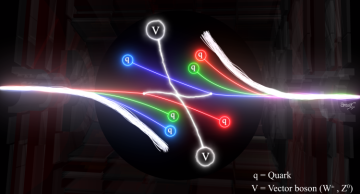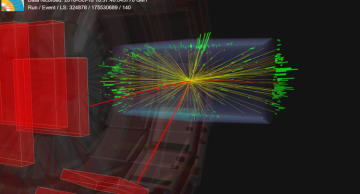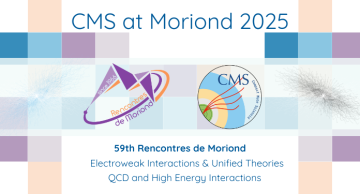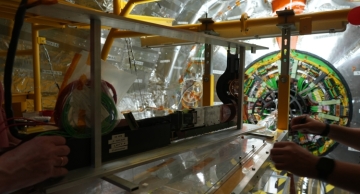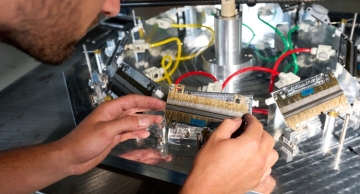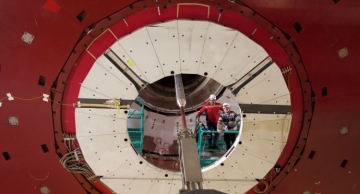The CMS experiment performs a combined measurement of the scattering of W and Z bosons in the several possible final states, improving over the precision of each individual result.
When the Large Hadron Collider started taking data in 2008,…
News
|
maiqbal |
Physics
|
maiqbal |
Physics
The CMS experiment conducts the first search for dark matter particles produced in association with an energetic narrow jet—the pencil jet.
Dark matter remains one of physics’ greatest mysteries. Despite making up about 27% of the universe’s…
|
maiqbal |
Physics
In a recent measurement, the CMS experiment confirms a slight but persistent disagreement between the simulated and the observed rates of events in which a top quark pair is produced accompanied by a W boson.
One of the goals of the CMS…
|
maiqbal |
Physics
The CMS experiment has conducted a comprehensive study of the rates of production of top quark pairs created along with a photon, both inclusively and as a function of several kinematic variables.
As the heaviest fundamental particle, the top…
|
maiqbal |
Physics
The CMS experiment studies the Higgs boson as a potential window into dark matter, and sets constraints on this mechanism, which gives rise to isotropic sprays of low-energy particles.
Quantum chromodynamics (QCD) describes the strong…
|
maiqbal |
Physics
The CMS experiment has conducted a search for heavy beyond-standard-model particles (referred to as a Z′ boson) that give rise to a top quark-antiquark pair decaying into hadrons. The search excludes the existence of the new Z′ boson with…
|
adelanno |
Physics
The ratios of the B meson production fractions have been measured for the first time in the CMS experiment.
B mesons are composite particles consisting of a bottom antiquark and another type of quark, such as an up, down, or strange quark,…
|
maiqbal |
Physics
The CMS Collaboration announces 50 new results for Moriond 2025.
In Higgs physics, following a comprehensive research program aimed at characterizing the Higgs boson by measuring its properties and interactions across various decay and…
|
maiqbal |
Physics
CMS discovers associated production of a Z boson and an ϒ meson.
At the CMS experiment, we have observed for the first time an exceptionally rare process: the associated production of a Z boson with an ϒ(1S) meson, the lightest bound state of…
|
sohurst |
Detector
New BRIL subsystems illuminate CMS’s path through Run 3
After many months of meticulous preparations, new BRIL subsystems were installed in mid-January. The intervention will ensure that CMS can continue to achieve world leading accuracy in its…
|
sohurst |
Detector
The TBPS Rings are in production, offering an innovative design to incline sensors toward the LHC beam and maximise coverage. They are the first support structures in production for the new Tracker!
As part of the CMS Hi-Lumi Tracker, construction…
|
sohurst |
Detector
The first of the improved Resistive Plate Chambers for Hi-Lumi CMS were installed in record time during the LHC winter break.
The RPC Hi-Lumi CMS Project reached an important milestone at the start of 2025 by delivering the first half of its final…

